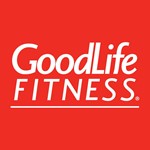We’ve all been there. It’s mid-afternoon and you’re feeling drowsy. It’s tough to concentrate and you want to put your head down and sleep…just for a few minutes.
Research shows this feeling often hits about eight hours after we wake up in the morning. It’s because the body’s circadian rhythms are telling us to recharge our minds and bodies.
What to do? Most people who work in an office or public space are forced to ignore their urge to sleep and keep working, but a short nap can work wonders to improve productivity for the rest of the day. In fact, leading companies like Google and Huffington Post are introducing nap rooms for their team members to embrace the power of the nap.
Sleep boosts brain power and creativity and supports muscle and tissue repair. It helps restore energy and promotes hormone release. Getting enough sleep even enhances libido. Believe it or not, sleep also helps reduce the risk of heart attack and is vital for weight loss.
If you do it right, a mid-day nap can fuel your body and mind to power through until bed time (there’s a reason it’s called a power nap).
Planning for a power nap
A typical sleep cycle takes 90 minutes and has five stages, including rapid eye movement. Power napping involves sleeping in short bursts of 20 to 30 minutes. During this time your body only has time to enter the first two stages of sleep – just long enough for your brain to slow down, your body temperature to decrease and your muscles to relax. If you do it right, you’ll wake up refreshed and relaxed, ready to tackle the rest of the day.
Three tips for successful power napping:
- Keep it short: Set an alarm for 30 minutes to end the nap before you get into a deeper sleep.
- Find a dark, quiet, cool spot: Identify a good spot for sleep. Ideally, you need quiet, dim light and cooler temperatures.
- Pick a time and stick with it: It’s best to stick with a time to nap each day. Just like bedtime, you can program your body to be ready for sleep at a certain time if you’re consistent.
- Create the right environment. Close the blinds, use earplugs and remove electronics. Be sure to wear comfortable clothing and set up your bed with the right pillow and covers for the temperature.
Stretch your sleep to 90 minutes
A 90-minute nap can be even more restorative. You go through all the stages of the sleep cycle, allowing your mind and muscles to rest even more and delivering the ultimate productivity boost. Again, be careful not to go any longer than 90 minutes (avoid a second sleep cycle), as this will reverse all the positive effects and leave you feeling groggy and even more tired than when you started.
To avoid interrupting your night time sleep patterns, remember:
Don’t nap after 4 p.m. If you nap in the late afternoon or early evening, you risk sleeping longer or waking up refreshed just a few hours from bedtime. Either way, you interrupt your nighttime sleep cycle, which is vital to functioning well during the day.
If you suffer from insomnia, don’t nap at all. If you’re staying awake for longer periods at night, it’s tempting to nap during the day…but resist the urge. For the best chance of a good night’s sleep, push yourself to stay awake all day and get an early night.
With some planning and practice, a mid-day nap can wake up your productivity and your mood, making you more alert and energetic overall.
